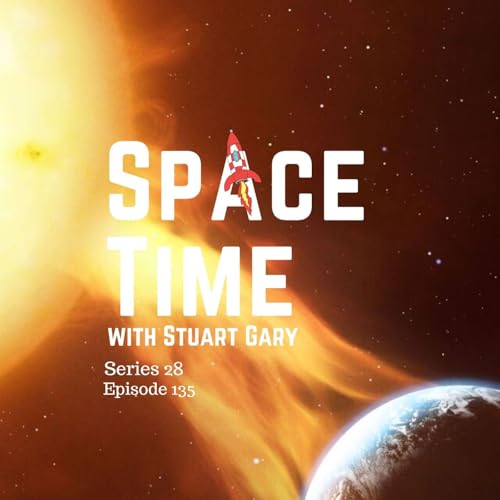
Auroras and Cosmic Craters: Unveiling Earth's Spectacular Space Weather and Impact Discoveries
No se pudo agregar al carrito
Solo puedes tener X títulos en el carrito para realizar el pago.
Add to Cart failed.
Por favor prueba de nuevo más tarde
Error al Agregar a Lista de Deseos.
Por favor prueba de nuevo más tarde
Error al eliminar de la lista de deseos.
Por favor prueba de nuevo más tarde
Error al añadir a tu biblioteca
Por favor intenta de nuevo
Error al seguir el podcast
Intenta nuevamente
Error al dejar de seguir el podcast
Intenta nuevamente
-
Narrado por:
-
De:
Auroral Displays Light Up the Skies
Planet Earth has been treated to an extraordinary display of auroras, with both the Aurora Australis and Aurora Borealis lighting up the skies following three powerful X-class solar flares, including an X 5.1 event on November 11. This segment dives into the mechanics behind these solar flares, the resulting coronal mass ejections (CMEs), and how they triggered spectacular auroras visible at lower latitudes than usual, including sightings as far north as Cairns and even Florida.
Largest Modern Impact Crater Discovered
Scientists have uncovered what is believed to be the largest modern impact crater on Earth, the 900-metre-wide Jinling Crater in southern China. This well-preserved structure, dating back to the Holocene epoch, offers new insights into extraterrestrial impacts and their effects on our planet. The discovery challenges previous assumptions about the frequency and scale of impacts from small celestial bodies and highlights the importance of studying such geological features.
Nasa's Key Communications Dish Out of Service
In a significant setback for NASA, the 70-metre Goldstone deep space communications dish has been rendered inoperable due to an accident that occurred in September. The incident has raised concerns about the strain on NASA's Deep Space Network, especially with upcoming missions like Artemis 2. We discuss the implications of this loss for various space missions and the efforts being made to mitigate the impact on communications.
The Science Robert
In our science report, we highlight a new projection from the World Meteorological Organisation indicating that 2025 is unlikely to be the hottest year on record, but it will rank among the top three. We also address public health concerns surrounding a measles alert in Australia, linked to declining vaccination rates, and the potential resurgence of preventable diseases. This segment underscores the importance of vaccination in maintaining herd immunity and protecting public health.
www.spacetimewithstuartgary.com
✍️ Episode References
Journal of Geophysical Research
Nature Communications
World Meteorological Organisation Reports
Become a supporter of this podcast: https://www.spreaker.com/podcast/spacetime-your-guide-to-space-astronomy--2458531/support.
Todavía no hay opiniones


